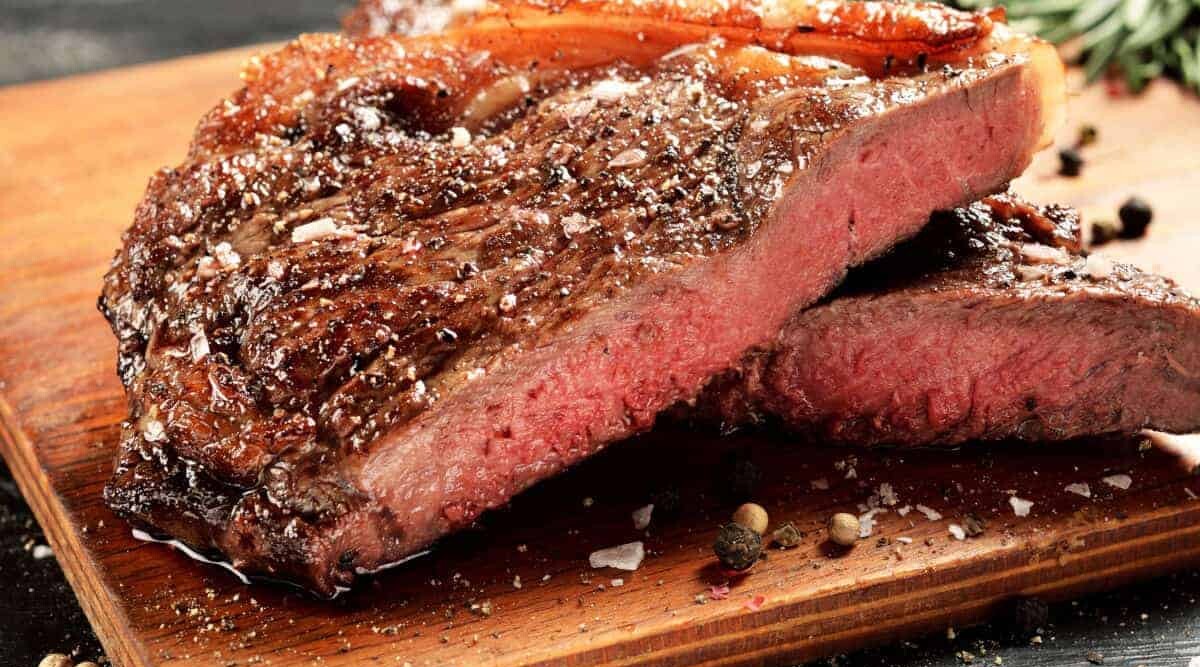
The name “strip steak” comes from the shape of the “longissimus” muscle of the cow, from which it is cut. This muscle is long and continuous, forming a strip-like shape, hence the name “strip steak.”
Also commonly called a New York Strip in U.S. eateries, it comes from the short loin of a cow, specifically a part situated behind the ribs and under the backbone. As this region doesn’t actively work, the muscle is tender with lots of marbling, providing the steak with its renowned juiciness and flavor.
Also, the Strip steak, unbeknown to many, is actually one half of the beloved T-bone. So if you know and love a T-bone, chances are you’ve sampled the delights of a strip steak without even knowing!
Anyhow, in this no-nonsense ‘stripped’ back guide, we will tell you everything you ever wanted to know about the Strip steak, including what it is, where it comes from, alternative names, what makes it so fabulous, how to cook it to perfection and most importantly where to get your hands on some of the finest examples.
Eyes down, taste buds engaged, let’s get into the Strip steak.
Key Takeaways
- The Strip steak, also known as the New York Strip or Delmonico steak, is highly prized for its flavor and tenderness.
- The Strip steak comes from the short loin sub-primal, which produces other premium steaks like the Filet Mignon and Porterhouse.
- The strip steak has more intramuscular fat than sirloin or filet, giving it a rich flavor and firmer texture.
- The T-bone steak consists of a small piece of tenderloin steak and a larger piece of strip steak, with the strip steak providing the most flavor.
- Strip steak is commonly found in restaurants and supermarkets and can be purchased online from various outlets.
- One steak per person is typically enough for a satisfying meal.
- Prepare strip steak by simply seasoning it with salt and grilling it on high heat or smoking it for added flavor before a final sear.
- It is a popular choice for steak lovers due to its tenderness and flavor.
Jump to:
- 1 Key Takeaways
- 2 What is Strip Steak?
- 3 Where Does Strip Steak Come from on the Cow?
- 4 What Other Names is Strip Steak Known as?
- 5 Flavor, Texture, Fat Content and Tenderness
- 6 Typical Uses for Strip Steak
- 7 Nutritional Information
- 8 My Take on Strip Steak
- 9 Buying Advice for Strip Steak
- 10 Where to Buy Strip Steak Online
- 11 Strip Steak Price
- 12 Portion Size: How Much Strip Steak Per Person?
- 13 How to Prepare Strip Steak for Grilling or Smoking
- 14 How to Cook it on a Grill or Smoker
- 15 Conclusion
What is Strip Steak?

Strip steak, also known as the Top sirloin steak, is a beef steak from the cow’s short loin area, as seen in the diagram below. This area is near the back of the cow, just behind the ribs and a short step away from the home of other famous cuts such as the Porterhouse and the T-bone steak.
Because of where it’s from, strip steak is known for being really tender and flavorful, making it one of the most popular steaks for grilling.
When looking at a strip steak, you’ll notice it has a nice, meaty texture with a bit of fat around the edges. This fat is a good thing, adding lots of flavor when you cook it. The steak itself is pretty lean, which means it doesn’t have a lot of fat running through it, but it’s still super juicy and tasty when cooked right.
Nearly always on the menu at every restaurant around, you’ve probably had one of these guys at some point in your life but maybe under a different name. You may have heard it called a New York strip, Kansas City strip, or simply strip loin. Despite the other names, they’re all pretty much the same cut of meat.
When it comes to cooking strip steak, you can grill it, pan-fry it, broil it, or even roast it. The key is not to overcook it so it stays tender and juicy. Most people like it best when it’s cooked to medium-rare or medium.
Where Does Strip Steak Come from on the Cow?
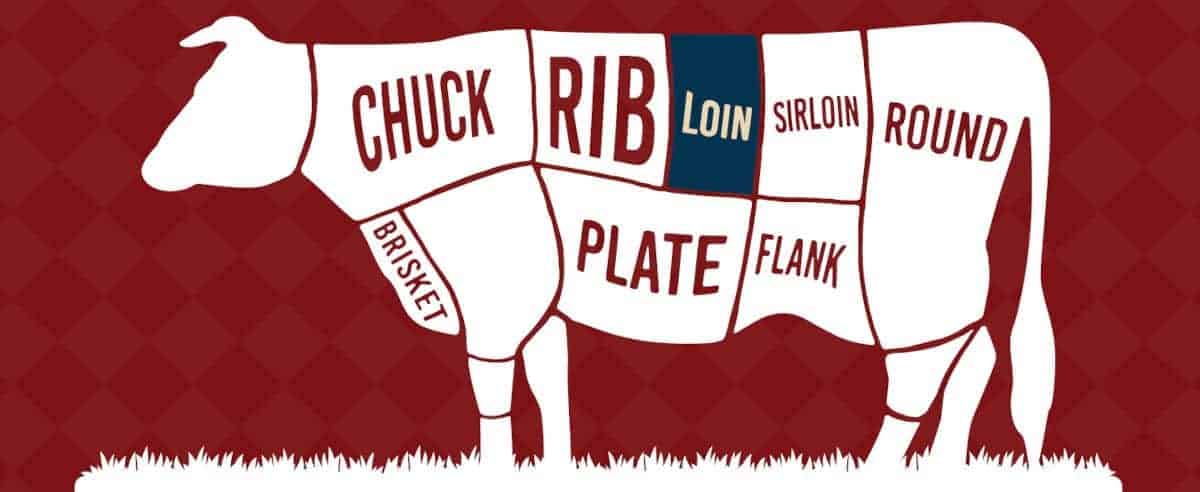
Strip steak comes from the short loin sub-primal, which is part of the loin primal, the area of a steer that produces the prime steaks such as the Filet Mignon, the T-bone, the Porterhouse and the Strip.
The Strip is created once the Tenderloin and the backbone have been removed from the short loin.
Some butchers will leave the bone in with the Strip, but more often than not, the bone is removed. The sub primal it’s cut from is 16 to 18 inches long, and it will produce around a dozen steaks, depending on how generous the butcher is with their thickness.
The main muscle to make up the Strip is the Longissimus Dorsi, also the main muscle in a Rib-eye.
Depending on the skill of the butcher when cut, you may get some nearby muscles attached, the Multifidus Dorsi and the Gluteus Medius.
While the Multifidus is a welcome tender addition, the Gluteus Medius is a tough chewy extra that you can do without.
If you want to learn more about cuts of beef, where they come from and more, check out our beef cuts chart and diagram.
What Other Names is Strip Steak Known as?
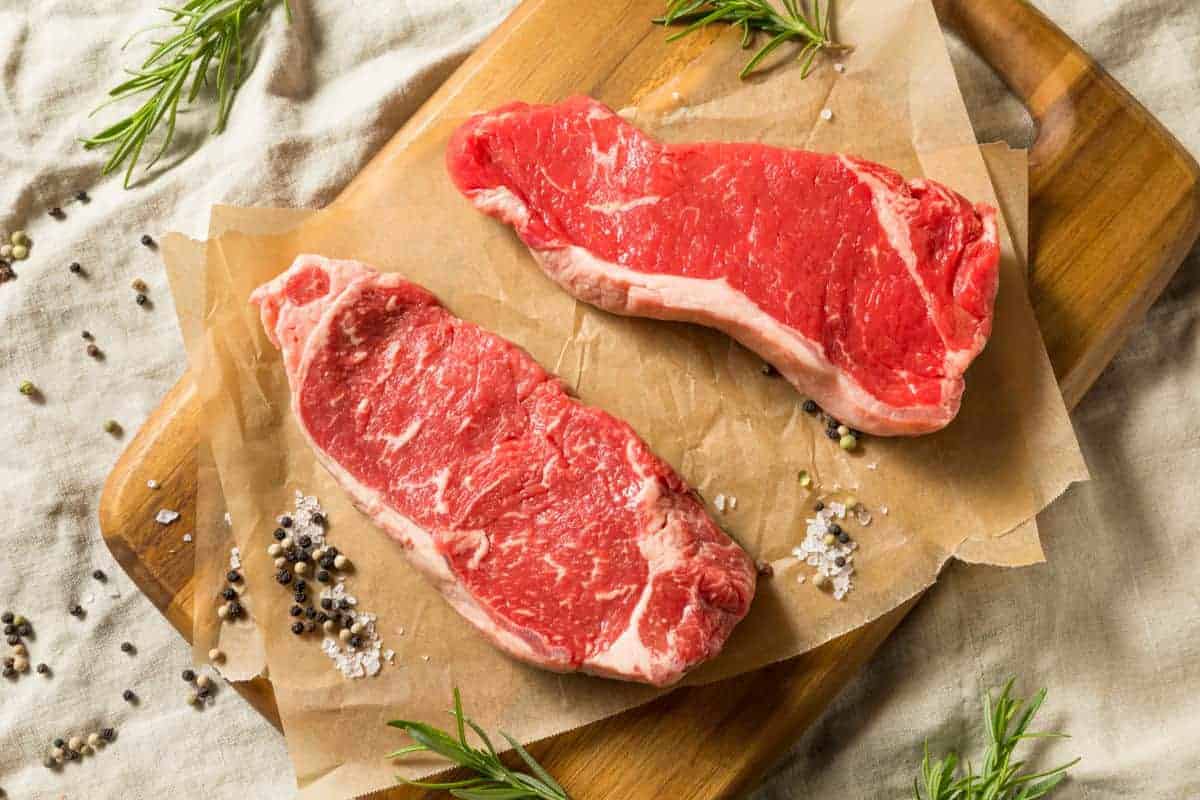
The Strip steak was given its name by the Delmonico Restaurant in New York City, in 1837. Also known locally as the Delmonico steak, because of its association with New York, it was soon given its common name, the New York Strip steak.
Here are some of its other names:
- Kansas City Strip steak — is the name given to the Strip with a small portion of the bone and a thin layer of fat still attached, as this is how the locals like it. This is one of the more popular names.
- Strip Loin — is what Canadian meat purveyors call the Strip steak.
- Ambassador steak — and as Jess Pryles honestly puts it, is a new name that is either used to show off or confuse customers.
To make it more confusing, across the pond in the United Kingdom, they call the Strip the Sirloin steak, as do the Australians.
But what Americans know as the Sirloin steak, the Great British public would call the Rump steak.
Being seriously popular, and over hundreds of years, it has gathered many more nicknames, so just in case you are somewhere that has a different nickname for it, the industry identification code is 1180 (IMPS/NAMP), or 1404 (UPC).
Flavor, Texture, Fat Content and Tenderness
The Strip having more intramuscular fat than a Sirloin or Filet, is known for its great flavor and firmer texture.
It’s less tender than the leaner steaks and with less marbling and thus slightly less flavor than a Ribeye, but the Strip is a happy medium for both tenderness and great taste.
The fat cap means that the flavor is fuller and buttery for extra beefy depth.
Typical Uses for Strip Steak
The Strip is one of a handful of premium steaks that is typically as-is, as a stand-alone steak and offered in both restaurants and supermarkets alike. But strip steak is flexible and used in all sorts of meals.
One of the most popular cooking methods is simply on the grill. Because it has just the right amount of fat, it stays juicy and tastes great when grilled. It’s a big favorite for barbecues or when you want to make a special dinner at home.
Another common way to cook strip steak is by pan-searing it. This method is great for when it’s too cold to grill outside or cooking in a kitchen without a grill. Just a hot pan and a bit of oil, and you can get a nice, tasty crust on the steak while keeping the inside cooked just how you like it.
People also slice it up for stir-fries or salads. The steak adds a lot of flavor and makes these dishes feel more like a full meal.
Nutritional Information
| Nutrition | Total Amount (Based on 3 oz Serving) | % Daily Value (based on 2000 calories/day) |
|---|---|---|
| Calories | 160 | 8% |
| Saturated Fat | 2.3 g | 13% |
| Protein | 25 g | 50% |
| Iron | 1.6 mg | 10% |
| Zinc | 4.5 mg | 30% |
My Take on Strip Steak
We eat a lot of strip steak in my house and have done so for years. I love how it’s not too pricey but still packs a ton of flavor.
My favorite way to cook it is to season with just salt and pepper and then reverse sear it. I start in a low temperature smoker, typically with cherry wood smoke, until it’s almost at about 15 °F, then finish it off in a hot cast-iron pan for that perfect sear. This method is foolproof for getting it just right every time.
Once cooked, I love to use it in a strip steak sandwich with a hearty roll. a French baguette if possible, where I soak the bread in some melted beef drippings, lay the steak on top, smother that with fried onions, and top with a medium heat chili mayo. Simple but incredibly delicious.
If you’re interested, my top tip for grilling strip steak, if you’re going to out and out grill it and not do a reverse sear, is to NOT take it out of the fridge to warm a little before grilling. Nearly everybody advises to do this, but I don’t.
If you grill it straight from the fridge, the insides stay cooler longer, allowing you to build up a greater crust via extra searing. The darker and more uniform across the surface, the better to take full advantage of the Maillard reaction for that extra flavor.
You can also make a compound butter to melt over the top while it’s resting, like my wild garlic butter or my wild garlic and bone marrow butter recipes.
Buying Advice for Strip Steak
The Strip steak is a regular on the butcher’s counter and commonly appears in the supermarkets and online meat markets.
Different outlets will offer a choice of weights and styles, such as bone-in or bone out and extra lean or extra fatty so that you will have plenty of choices.
If you’re looking for the extra wow factor when it comes to steaks many online outlets specialize in extra-long dry-aged beef or specific USDA beef grades and specialties such as Kobe or Wagyu beef.
These are definitely worth checking out. They offer the choice of good, better, or top-quality beef with price categories that will suit everyone’s pocket.
So do your homework, and you’ll get good quality at the price that’s right for you.
Where to Buy Strip Steak Online
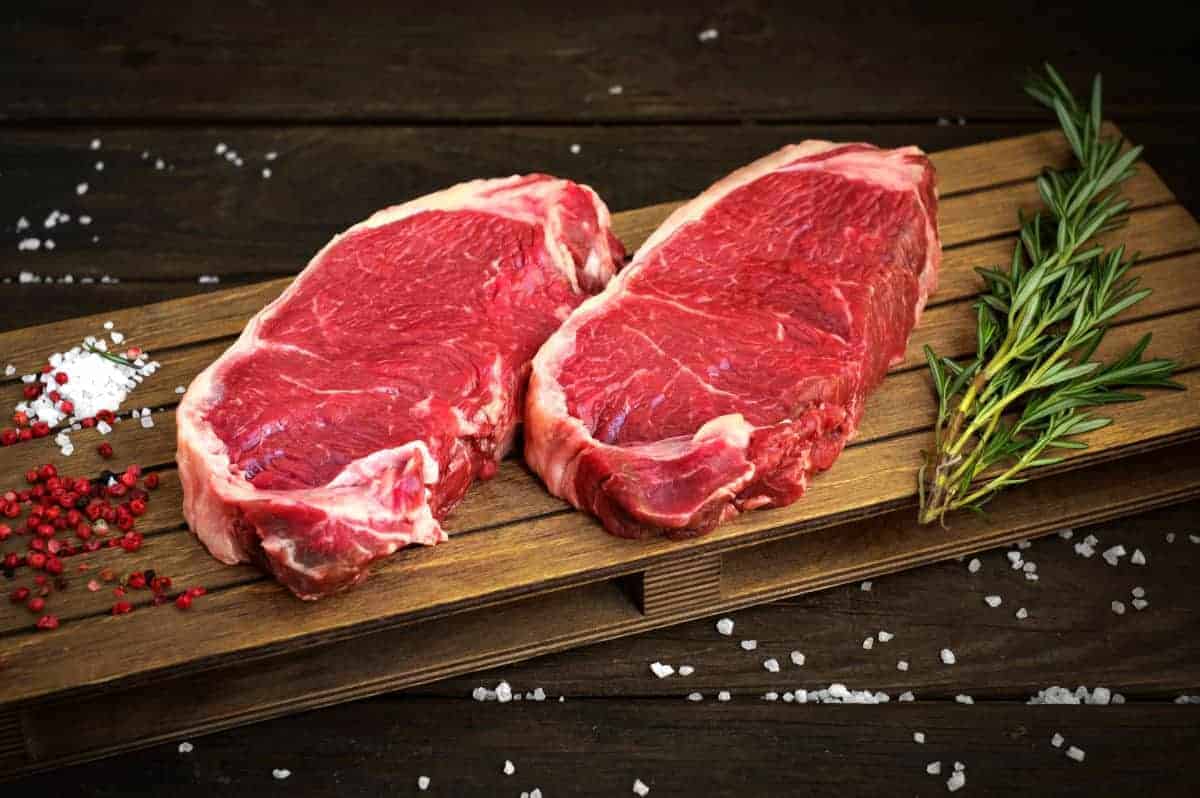
Online meat markets allow you to browse all the available Strip steaks on offer and to gain an understanding of the origins, the aging process, and the ethos of each meat provider.
All you have to do is choose what you want, place your order, and wait for that special delivery straight to your front door.
Here are three of many possibly online outlets:
Crowd Cow
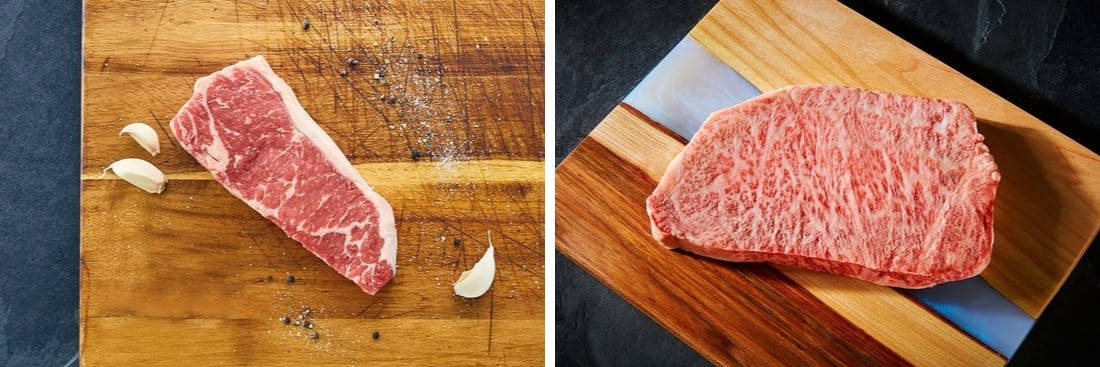
Crowd cow has a wide selection of NY strip steaks available, from affordable pasture-raised or 100% grass-fed cuts weighing 12oz, up to more luxurious Japanese A5 wagyu from Kagoshima or Miyazaki Gyu at 11oz to 12oz.
And for an absolute treat, they also sell A5 Kobe beef with its world-renowned status as the best available, with extraordinary richness and marbling.
Snake River Farms
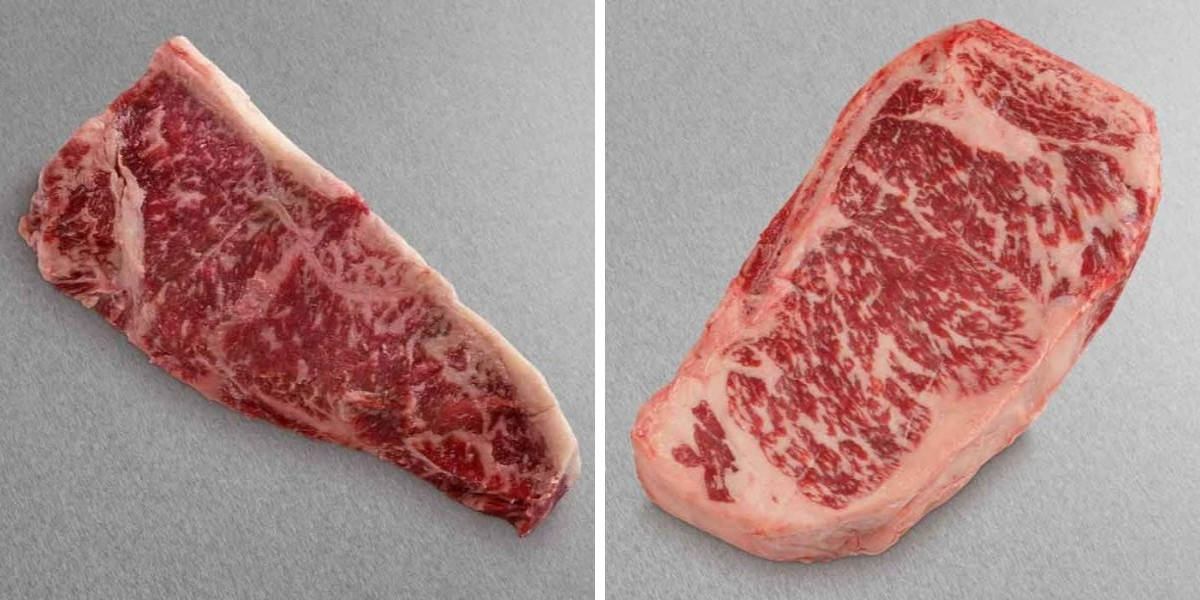
Snake River Farms sells three different NY strip steak cuts:
First, they sell an American Wagyu Black Grade end cut steak, which is a literal description of this steak, it being cut from the end of the strip loin. Average weight, 12oz.
Second, they sell an American Wagyu Black grade bone-in NY strip. Average weight, 1.2lbs.
Finally, they sell an American Wagyu Gold grade NY strip, which is their most marbled, rich, and flavorful NY strip, also sold on the bone and weighing 18oz on average.
Check Price on Snake River Farms
Strip Steak Price
The Strip steak being well-known and much-loved means it is readily available.
That being said, it still commands a premium price tag, and at the time of writing, it can cost, on average, anywhere between $20 and $40 per lb.
Portion Size: How Much Strip Steak Per Person?
The average Strip steak weighs in at around 12 to 14oz straight from the butcher, but it’s also available in smaller steaks from some outlets at around 6 to 9oz.
So, one steak per person is more than enough to satiate an appetite for a good steak, with some tasty sides, of course!
How to Prepare Strip Steak for Grilling or Smoking
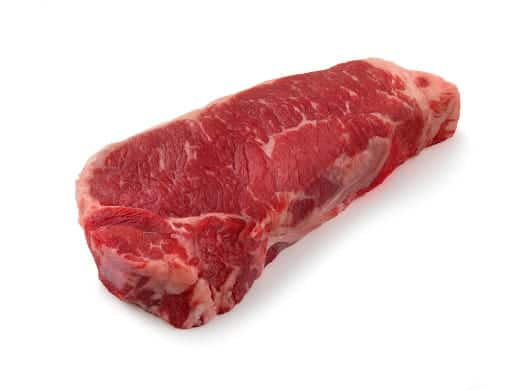
The Strip will more often than not come well-trimmed with no extra attention needed from yourself.
A mere pat with a paper towel and a good liberal seasoning with just salt is enough for the Strip.
Some add pepper as well, but the heat at which you will want to sear this steak means pepper can get burnt and add a bitter edge to the taste, so it’s best left for seasoning after the steak is grilled.
A super-hot grill or cast-iron skillet is the best way to achieve a golden color and char on your steak, or you can also smoke it, which we’ll go through in the next section.
How to Cook it on a Grill or Smoker
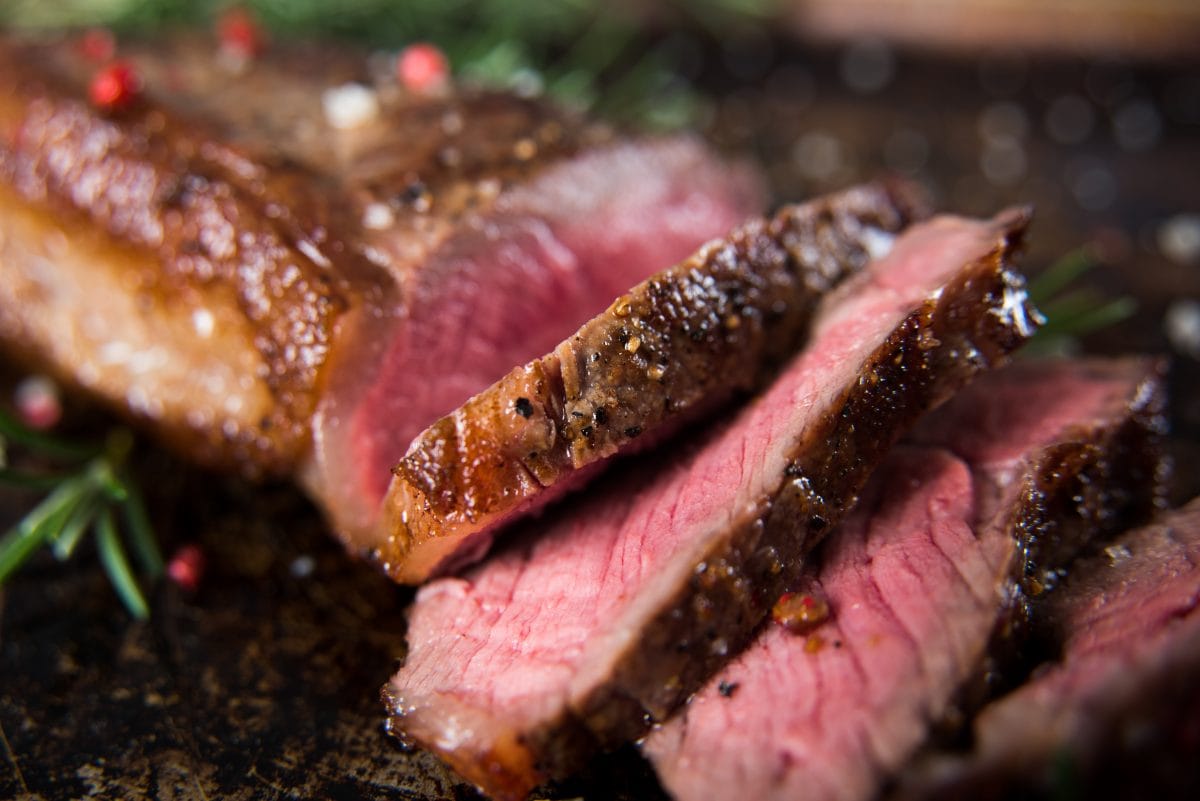
As with most good quality steaks, the easiest and quickest way to get your Strip steak fix is the high and dry method. A dried steak placed on a high heat grill for a few minutes each side until the desired doneness is achieved.
Alternatively, for a slight twist, you can smoke the Strip to perfection with the added smoky flavor of your choice.
Here’s our preferred smoke technique:
- Remove the steaks from the fridge and pat dry, leave for 30-45 minutes to temper.
- Light a dozen or so pieces of charcoal on one side of the grill. Heat grill to 225-250f.
- Season steaks with salt and pepper, and any other seasoning or rub that might take your fancy. Then oil lightly.
- Add your preferred chips to the coals and get the smoke going.
- Place the steaks on the grate as far away from the fire as possible, close the lid and smoke until the center of the steak reaches 120 to 125f, approximately 45-60 minutes.
- Remove the steak and rest it while you add fresh coals and increase the temperature of the grill to high.
- Give the steaks another brush with some olive oil and place on the direct heat side for 2 minutes each side until seared and crusted as desired.
- Serve hot from the grill with your choice of sides and enjoy.
Conclusion
The Strip is a superstar steak by all accounts. It is a top pick in many New York award-winning restaurants, and it is a champion of the extra beefy steak flavor.
So, whether you choose to order some in and fire up the grill or seek it on a date night out, both the lean steak lover and the flavor chaser are sure to be delighted with this one.
Whether you find a great steak restaurant or create your own recipe for this beefy bruiser, we’d love to know how you get on in the comments below!


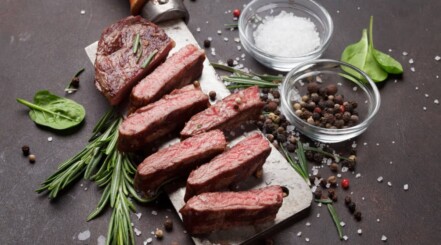
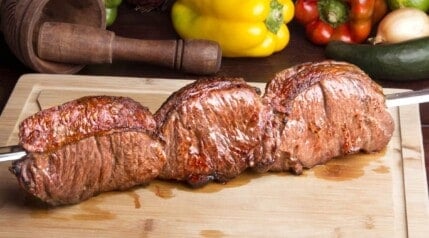
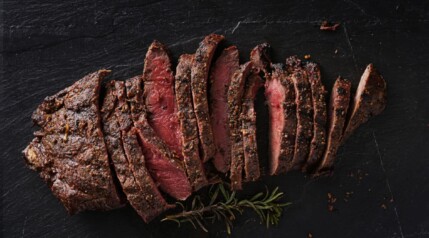
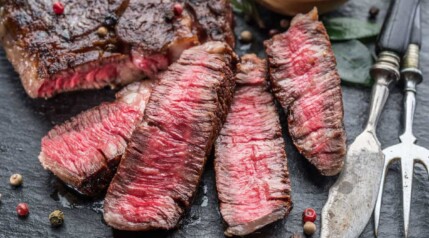
My husband put season salt and Mc Cormick seasonin on the new york strip steak and then grilled about three quarters of an inch thick. Was tough.
Sorry to hear this. Typically they are a very good steak, but quality and tenderness can vary wildly depending on the grade bought (choice, select, prime), how it was cooked, etc.